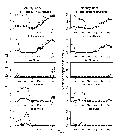Abstract
Fire is a recurrent disturbance in savanna vegetation and savanna species are adapted to it. Even so, fire may affect various aspects of plant ecology, including phenology. We studied the effects of a spatially heterogeneous fire on the reproductive phenology of two dominant woody plant species, Miconia albicans (Melastomataceae) and Schefflera vinosa (Araliaceae), in a savanna area in South-eastern Brazil. The study site was partially burnt by a dry-season accidental fire in August 2006, and we monitored the phenolology of 30 burnt and 30 unburnt individuals of each species between September 2007 and September 2008. We used restricted randomizations to assess phenological differences between the burnt and unburnt individuals. Fire had negative effects on the phenology of M. albicans, with a smaller production of reproductive structures in general and of floral buds, total fruits, and ripe fruits in burnt plants. All unburnt but only 16% of the burnt M. albicans plants produced ripe fruits during the study. Fire effects on S. vinosa were smaller, but there was a greater production of floral buds and fruits (but not ripe fruits) by burnt plants; approximately 90% of the individuals of S. vinosa produced ripe fruits during the study, regardless of having been burnt or not. The differences between the two species may be related to S. vinosa’s faster growth and absence from the seed bank at the study site, whereas M. albicans grows more slowly and is dominant in the seed bank.
Keywords:
Cerrado; flowering; fruiting; Miconia albicans; Schefflera vinosa; woody plants

 Thumbnail
Thumbnail
 Thumbnail
Thumbnail

